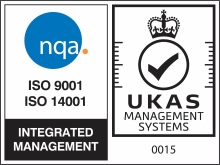Productivity and efficiency improvements
Our customer, a leading provider of immunoassays and in vitro diagnostic (IVD) devices manufacturer, had an existing well plate filling machine which had been in service for 15 years and had recently started experiencing issues that were affecting productivity and efficiency.
The system was prone to overfilling the wells, causing liquid spillage and at one point the manufacturer could only fill half of the 96 wells within one plate at once. As a result, the process was substantially slowed down and could only deliver 600 plates per day.
The technology behind it was also obsolete and several replacement parts were no longer available off the shelf, leaving the factory exposed in case of equipment failure. In addition, the system could no longer offer the level of flexibility that the plate-based assay provider needed to support its customers.
Highly automated efficiency
We developed a highly automated well plate filling machine, which used an array of 12 syringe pumps to fill a well plate from a bank of 96 separate reservoir flasks. This arrangement provided the freedom of being able to fill each well with a different liquid, if required, and each row of eight wells linked to the same pump meant that different levels could also be dispensed row by row.
We designed into the machine a stacking system which meant that the operator could load 30 empty well plates on the left of the machine and then return later and collect 30 full well plates right of the machine and refill the empty well plate stack.
Well plates are a must for clinical laboratories where bioassays are used for high-throughput screening and IVD. In these situations, reproducibility, precision, and accuracy are fundamental to create a stable and reliable system that allows clinicians to correctly interpret the results.





Competitive Advantage
To thrive in such a challenging market, well plate kit manufacturers need to be ahead of the curve, implementing dependable innovative solutions to deliver high volumes of accurately filled assay containers. In line with this winning approach, one of the major players in the market for disease and allergy diagnostic assay kits wanted to invest in an automation solution, upgrading its multichannel well plate filling system.
The solution has boosted operations increasing production yield by 700-800% and is projected to cut waste by half, therefore productivity has skyrocketed. The new machine can now process more than 4,500 plates per day.
